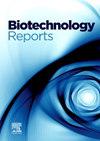Prioritizing repurposable drugs for Alzheimer’s disease using network-based analysis with concurrent assessment of Long QT syndrome risk
Q1 Immunology and Microbiology
引用次数: 0
Abstract
Alzheimer's disease affects 6.9 million Americans aged 65 and older, a number expected to double by 2060. Eight FDA-approved drugs target Alzheimer's, but no cure is available, and most treatments are symptomatic. Drug repurposing, the use of FDA-approved drugs for new indications, is a promising strategy to address this lack of effective therapies. However, despite prior safety approval, repurposable drugs may still trigger unexpected side-effects in new contexts. This study introduces a network-based approach to minimize side-effect risk in drug repositioning, focusing on QT interval prolongation, a cardiac side-effect observed in Alzheimer's patients treated with acetylcholinesterase inhibitors. The method integrates Mode-of-Action and Random Walk with Restart analyses to identify repositioning candidates while assessing QT-related risk. This strategy identified promising compounds including acamprosate, tolcapone, sitagliptin, and diazoxide, with potential to mitigate disease pathology. Gene set enrichment analysis was used to computationally assess the compounds' ability to reverse disease-related gene expression signatures.

利用基于网络的分析对阿尔茨海默病的可重复使用药物进行优先排序,同时评估长QT综合征的风险
阿尔茨海默病影响了690万65岁及以上的美国人,预计到2060年这一数字将翻一番。fda批准了八种针对阿尔茨海默氏症的药物,但目前还没有治愈方法,而且大多数治疗方法都是对症治疗。药物再利用,即使用fda批准的药物用于新的适应症,是解决这种缺乏有效治疗的有希望的策略。然而,尽管先前的安全性批准,可重复使用的药物仍可能在新的情况下引发意想不到的副作用。本研究介绍了一种基于网络的方法来最小化药物重新定位的副作用风险,重点关注QT间期延长,这是在使用乙酰胆碱酯酶抑制剂治疗的阿尔茨海默病患者中观察到的心脏副作用。该方法将动作模式和随机游走与重新启动分析相结合,在评估qt相关风险的同时确定重新定位的候选对象。该策略确定了有希望的化合物,包括阿坎普罗酸、托尔卡彭、西格列汀和二氮氧化合物,具有减轻疾病病理的潜力。基因集富集分析用于计算评估化合物逆转疾病相关基因表达特征的能力。
本文章由计算机程序翻译,如有差异,请以英文原文为准。
求助全文
约1分钟内获得全文
求助全文
来源期刊

Biotechnology Reports
Immunology and Microbiology-Applied Microbiology and Biotechnology
CiteScore
15.80
自引率
0.00%
发文量
79
审稿时长
55 days
期刊介绍:
Biotechnology Reports covers all aspects of Biotechnology particularly those reports that are useful and informative and that will be of value to other researchers in related fields. Biotechnology Reports loves ground breaking science, but will also accept good science that can be of use to the biotechnology community. The journal maintains a high quality peer review where submissions are considered on the basis of scientific validity and technical quality. Acceptable paper types are research articles (short or full communications), methods, mini-reviews, and commentaries in the following areas: Healthcare and pharmaceutical biotechnology Agricultural and food biotechnology Environmental biotechnology Molecular biology, cell and tissue engineering and synthetic biology Industrial biotechnology, biofuels and bioenergy Nanobiotechnology Bioinformatics & systems biology New processes and products in biotechnology, bioprocess engineering.
 求助内容:
求助内容: 应助结果提醒方式:
应助结果提醒方式:


